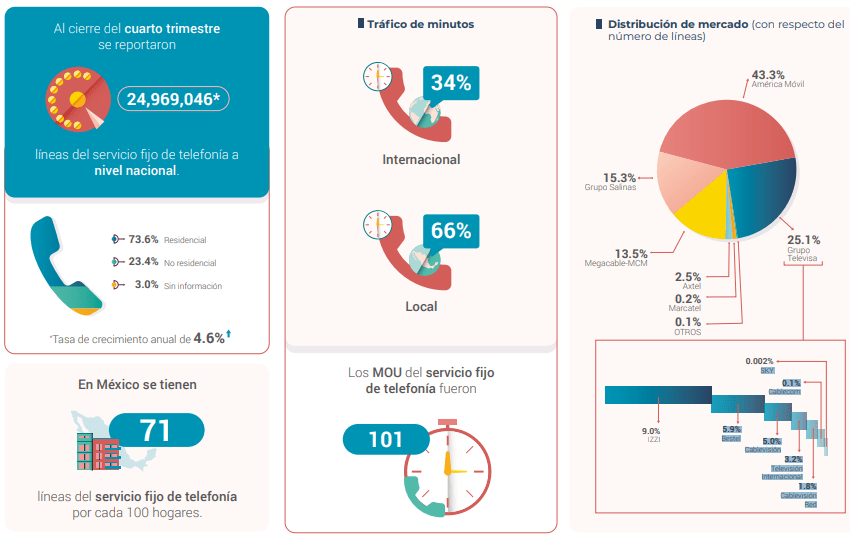América Móvil lost market share in the telephony service market in Mexico in 2021 over 2020, according to data from the Federal Telecommunications Institute (IFT).
After having a 47.5% coverage in 2020, the company reduced that indicator to 43.3%.
In contrast, Grupo Televisa increased its market share from 24.2% to 25.1%.

Grupo Televisa provides this service through its subsidiaries: IZZI, SKY, Bestel, Cablecom, Televisión Internacional, Cablevisión and Cablevisión Red.
At the end of the fourth quarter of 2021, we reported 24 million 969,046 fixed telephony service lines nationwide.
In 2021, Grupo Salinas had a 15.3 percent share, Megacable-MCM had 13.5 percent and Axtel had 2.5 percent.
América Móvil
In Mexico, competition in fixed telephony and fixed broadband increased during the last four years as a result of asymmetric regulation measures, which is reflected both in the reduction of América Móvil’s market share and in the degree of concentration, measured by the Herfindahl-Hirschman Index (HHI).
According to the World Trade Organization (WTO), the mobile market has failed to promote competition.
In any case, despite the increase in competition, each market segment in Mexico remains highly concentrated, as the HHI in all markets exceeds 2,500 points.
Commercial use of the spectrum frequency bands requires a concession that the IFT bids and awards for a (renewable) 20-year period.
Generally, the bands are tendered to provide service throughout the territory, but in some cases they may be tendered to provide services by region or locality.
All operators may participate in the bids, except the AEP, which requires authorization from the IFT.
Upon granting (and renewing) a concession, operators pay a fee, the amount of which is set by the IFT, subject to the opinion of the SCHP.
Concessionaires also pay annual fees determined by Congress as proposed by the SHCP.
According to the IFT, the use of the spectrum in Mexico has a high cost; annual fees represent 80% of the total cost.
Competition
In 2021, Congress increased the amount of annual fees for several frequency bands and introduced annual fees for bands that were exempted.
The IFT considers that this increase could impede investments; disincentivize the participation of current operators in bidding processes and create entry barriers for new entrants, which could impact end-user tariffs and accelerate the spectrum return process that began in 2019.
According to the authorities, the spectrum return process will result in an annual revenue loss of 4.5 billion pesos.
In 2021, the IFT tendered frequency blocks, but several of these were left deserted; as a consequence the Institute submitted a proposal for the amount of the annual fees to be modified.
![]()

